Garden Glimpses: Solstice Stunners
I’m sure you’ve heard the expression, “It never rains, but it pours.” Well, that was May 2025 in the garden. After a dry, showerless April, the May flowers were distinctly lacking, but 9” of rain that month brought on the vegetation like gangbusters, and by summer solstice, the garden had become a tangled jungle.
Between the incessant rains and then a physical setback when a burst water cyst behind the newly replaced left knee kept me in pain and off my feet for two weeks, there was no curb on the ambitious plans for world domination clearly hatched by my local weeds during their dormancy. I hadn’t even finished the last of the winter cleanup when the deluge began, and that boat has now sailed, with the eastern bank of the sand mound a revolting mix of old and new weeds. Well, there’s always 2026.
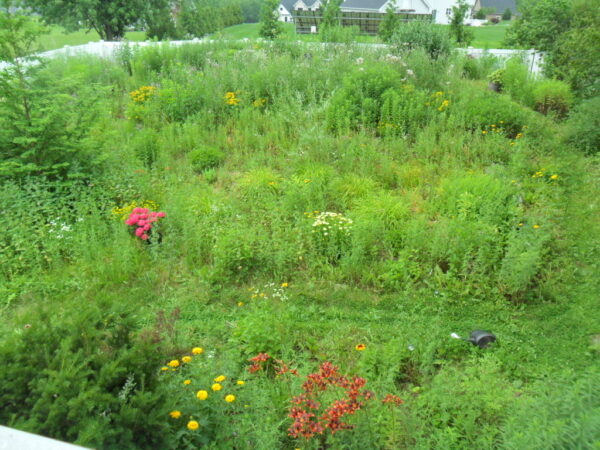
These cosmetic concerns don’t trouble me overmuch, and that section of garden is reserved for volunteer natives in any case, but it was essential that I excavated some prized perennials in other areas that had become overwhelmed by garden thugs of the weedy variety.
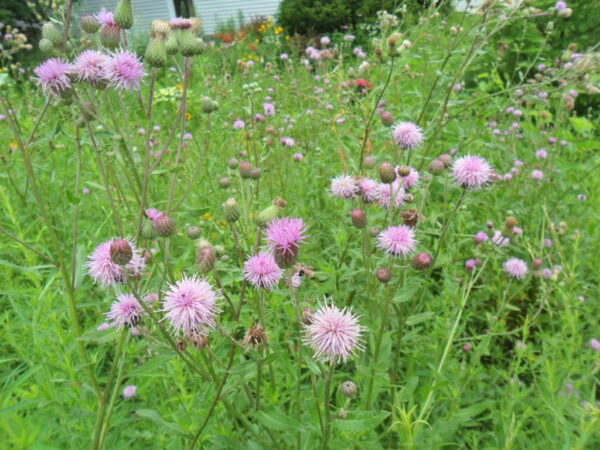
Now, a week after summer solstice, and following further delays from our first heat wave, that process of clearing is almost done. There is a thicket of thistle crowding some coreopsis that remains to be removed, and of course, plenty of other weeding still to be accomplished in less sensitive areas, but by and large, the worst of it is behind me.
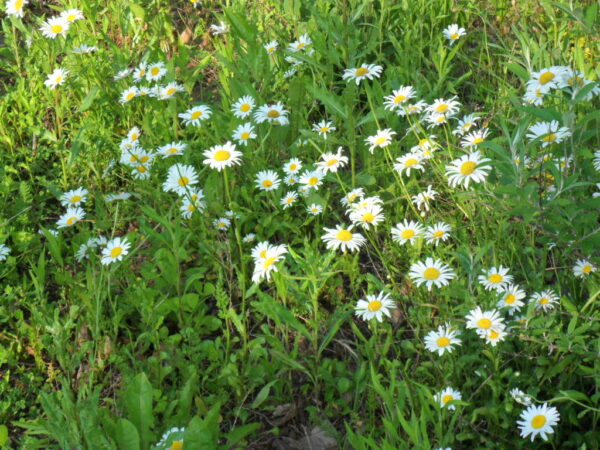
What the rain did accomplish was maximum growth for almost all green, leafy things (those wanted and those less so), something I’m just not accustomed to here, with an increasing seasonal drought pattern over the past twenty years. Things have grown by leaps and bounds: taller, wider, fuller and lusher than ever.
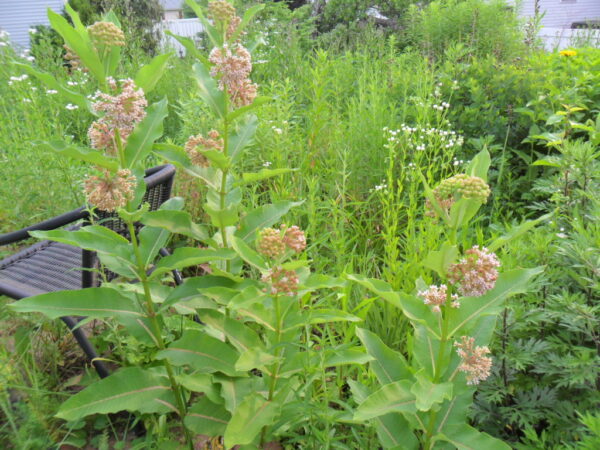
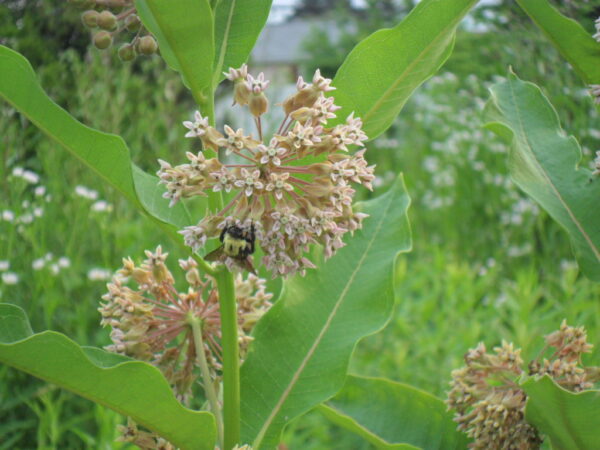
I’m pleased to note that my native milkweed, the only local host plant for Monarch butterfly larvae, has spread from a single stalk into an impressive patch. More, I’m also finding milkweed singletons spread out across the sandmound top, which will in time form colonies of their own. Now, if I could just find some Monarchs to lay eggs!
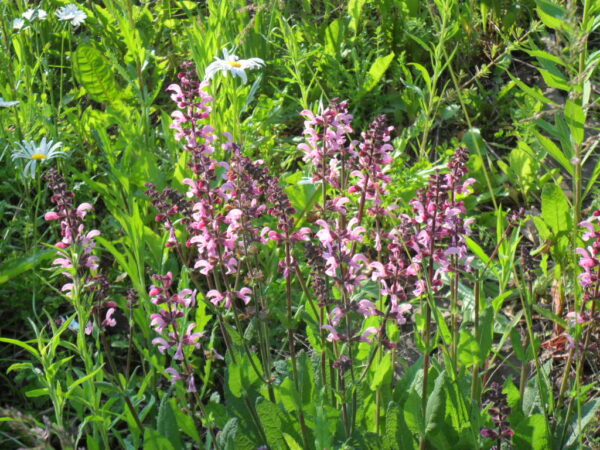
Stands of heliopsis and echinacea are filling in nicely, and achieving record heights; the daylily clumps are absolutely huge, and thickly studded with multi-budded scapes. The oak saplings have doubled in size, the hostas are forming vast mounds, and the geraniums have overspread the paths in the shade garden.
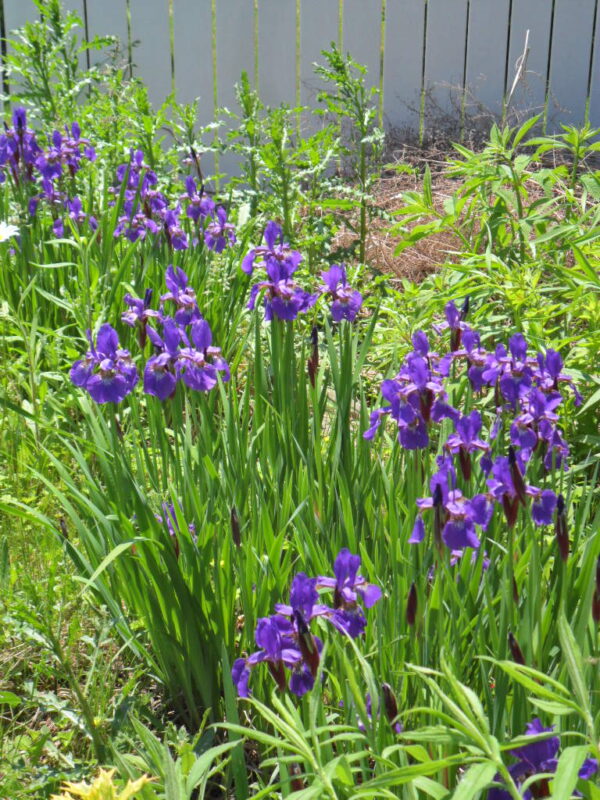
But perhaps the most impressive work has been done by my prized hydrangeas. In particular, Alice oakleaf hydrangea has definitely crossed the line from ‘large’ to ‘massive.’ Billed as eight feet by eight feet at maturity, this four-year-old is still not quite up to maximum height, but the cluster is at least twelve feet across, and growing every day. She has cannibalized an astilbe and three clumps of daffodils, is overarching a hosta with apparent ill intent, and encroaches on her neighbor hydrangea Annabelle, which I thought I’d spaced sufficiently distant as to avoid this issue.
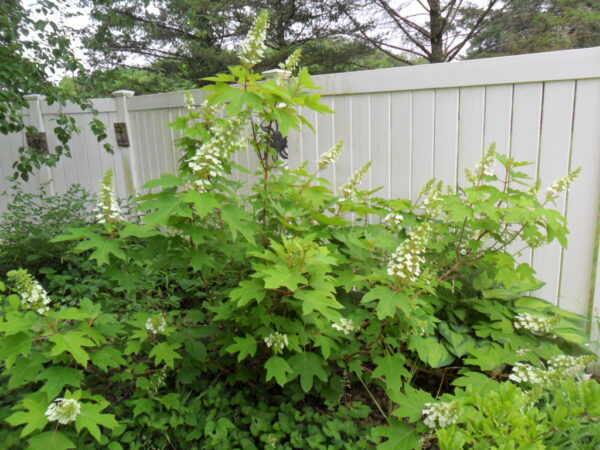
Alice was looking rather leggy in the early spring, with spidery limbs that angled away from each other, leaving large gaps in foliage, but May’s soakfest has sparked a bumper crop of new shoots, and she has filled in completely, now an unbroken mass of green from tip to tip. I am so very excited to see her this autumn, as she provides up to three months of continuous color on her vast, plate-sized leaves (some up to 15” in length), in a range from orange-red to crimson-purple.
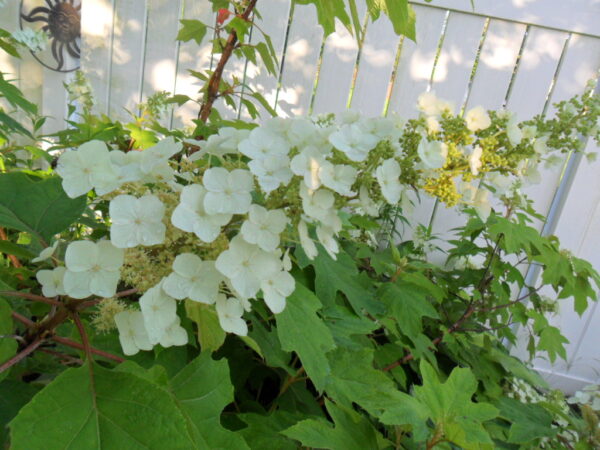
But I’m getting ahead of myself. For now, it’s no hardship to see her massive blooms unfold, up to 9” in length. These are comprised of large white outer false petals, sterile beacons to attract pollinators to the teeny, fuzzy, pale-yellow, fertile flowers beneath them. Alice is nicely speckled with blooms, a good showing, but oakleaf hydrangeas bloom on old wood, so of course none of these new shoots that have emerged to fill in her blank spaces will produce flowers this season. But next year…
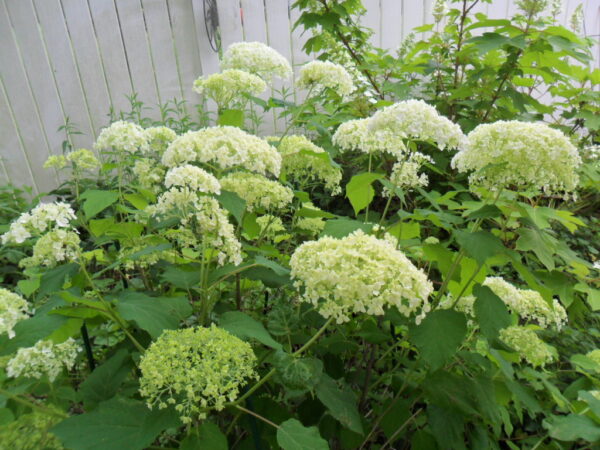
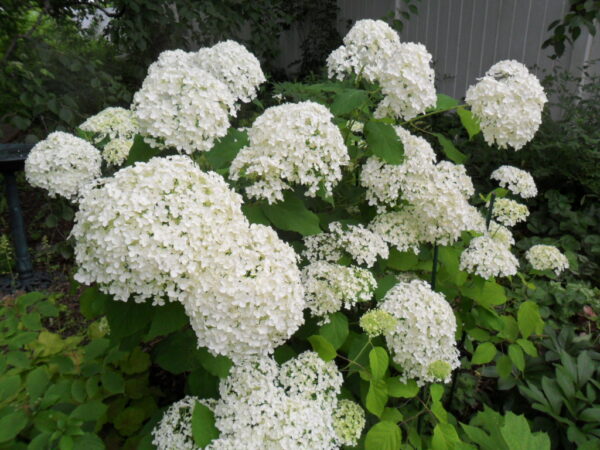
Her neighbor Annabelle is an arborescens-type hydrangea (meaning she dies back every fall, and starts fresh from her base every spring) and will never achieve Alice’s size, since she doesn’t build on former growth year to year. But Annabelle is an over-compensator, covered in large white puffballs of bloom, so densely packed you can barely see her foliage. The largest of these is 10” in diameter, making for a truly stunning display. These open in a pale green color, blanche to purest white, then fade to cream. The blossoms will persist right through the winter, turning brittle and dun-gray as the plant dies back, and look attractive with a light clinging snowfall.
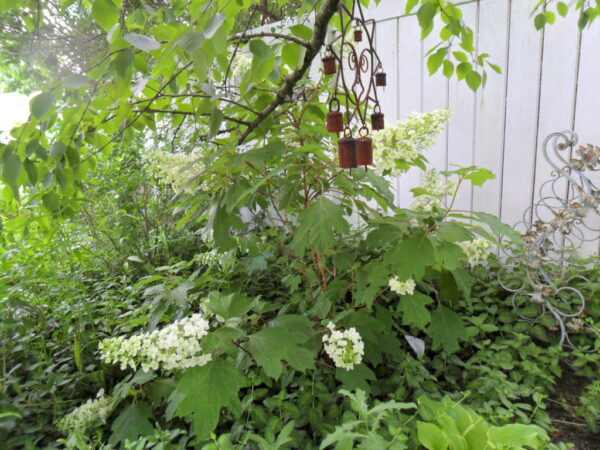
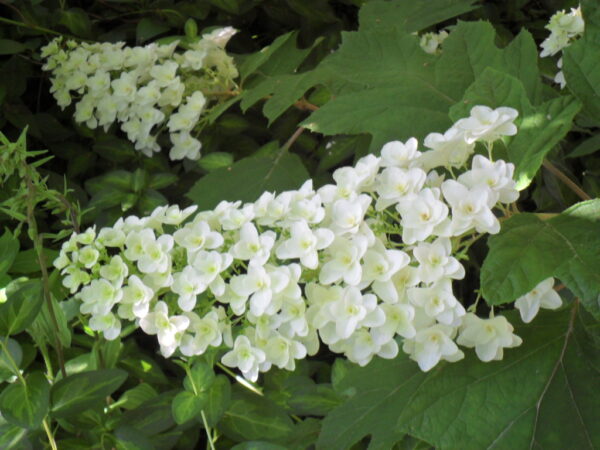
Snowflake and Pee Wee are two more of my oakleaf varieties that are both thriving. Snowflake produces enormous blossoms up to a foot in length, which emerge white but fade over time to pastel mint with touches of dusty rose. Her floral structure is much like Alice’s (whose flowers pinken with age, with a brief burst of magenta before fading to brown), while Pee Wee is perhaps the least dense in its composition, with sporadic white false petals barely concealing the fertile mass beneath.
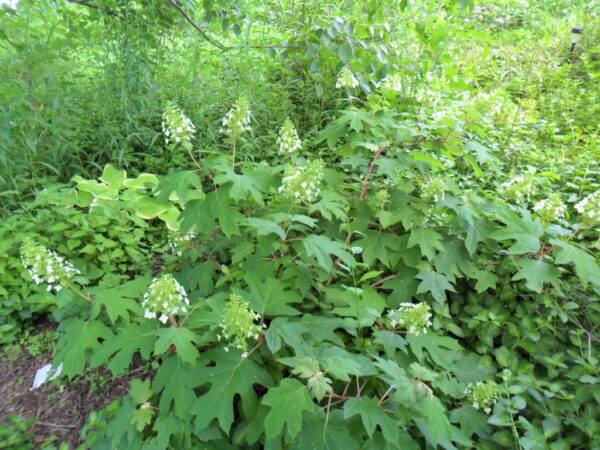
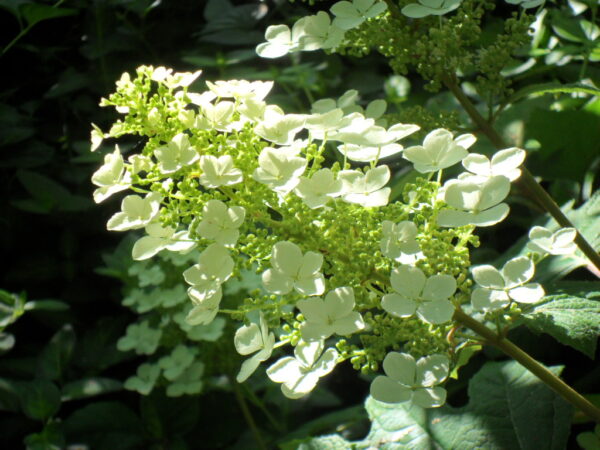
Snowflake is of average size for an oakleaf, probably 6’ x 6’ when all is said and done, and now growing up into the birch canopy above. Pee Wee is classed as a dwarf, with a range of 3’ x 3’, but has well-exceeded her expected girth, flopping out over the path, though in height she’s still a bit under-average.
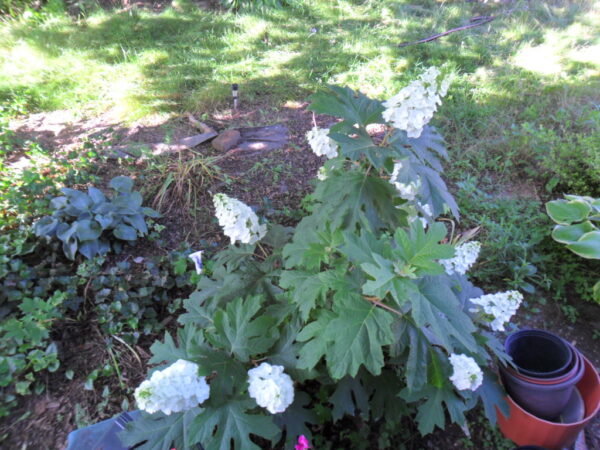
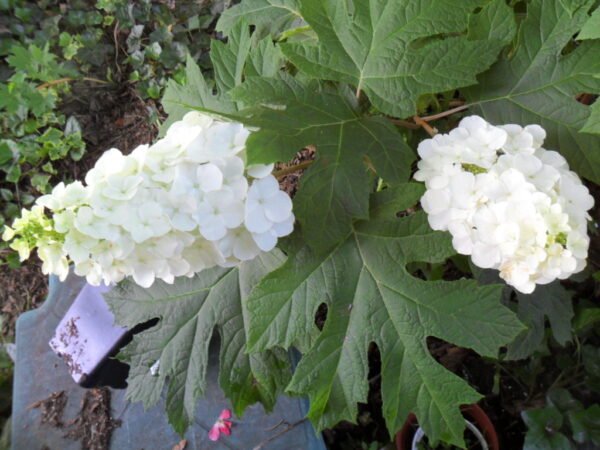
But it’s Queen of Hearts’ performance this year of which I am most proud. Queenie (as I call her) had a rough start here. A smaller specimen than the others to begin with, and purchased a year later, some never-determined catastrophe struck her in her first winter here, shearing off half her size. It took her two years to recover, and it wasn’t until her third season here that she gave me one lone blossom. If Pee Wee’s aerial quality is on one end of the oakleaf hydrangea blossom spectrum, then Queen of Hearts is on the other, with a mass of purest white false petals so densely packed that the fertile portions beneath cannot even be glimpsed. Queenie’s flowers are like shields of chain mail, overlapping and impenetrable. And this year, in addition to doubling in size, she sports a baker’s dozen of lovely blooms!
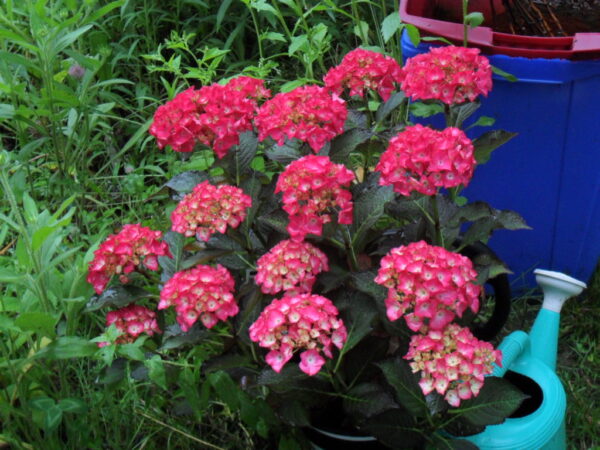
And we have a new addition to the hydrangea collection! I found Red Angel languishing outside a ShopRite, of all places, and simply had to have her! Though billed as “red,” I’d call her coloring more of a magenta, and that suits me just fine! Red Angel is a macrophylla hydrangea (literally, “big leaf,” which is a joke when you compare her foliage size, about 3” long, to oakleaf Alice’s footlongs), and as such, prefers full sun, whereas my other hydrangeas like partial shade. You’re likely familiar with macrophyllas from the ubiquitous foundation plantings in blue to pink so favored by 1950s landscapers. I find them yawn-making in general, but this magenta really pops, so I’m giving her a shot. For now, lacking assistance to plant, I’ve just moved her to a larger pot for the summer, where it will be easier to keep her hydrated (and she’ll be happier than in my clay soil). Come the autumn, she’ll find her permanent spot.
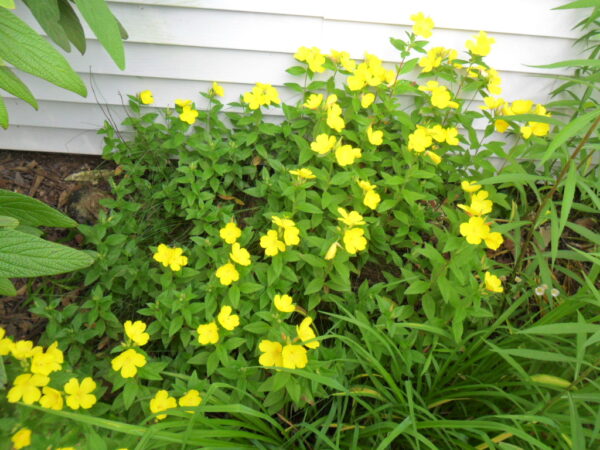
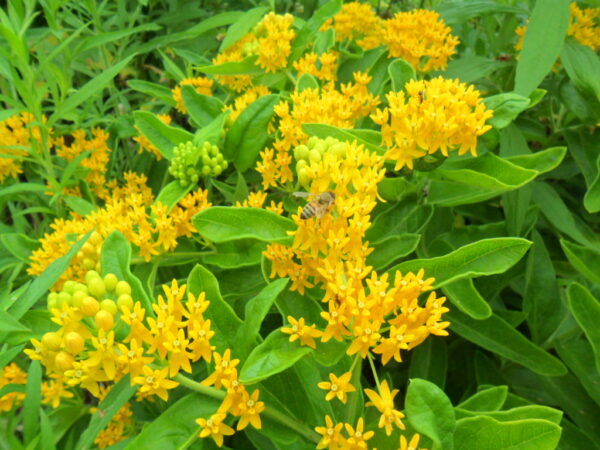
Beyond the show-stealing hydrangeas, June is a bit of a slack month for bloom in the garden. Gone are the pink and lavender hardy geraniums, the spikes of fluffy white on mounds of astilbes and amid seas of woodruff, the swathes of purple violets and bright yellow dandelions. The sixth month has its minor glories: pink salvia and white daisies, blue Siberian iris and yellow sundrops, dramatic orange and purple-black Forever Susan Asiatic lilies, and amber Asclepius all had their moment in the footlights.
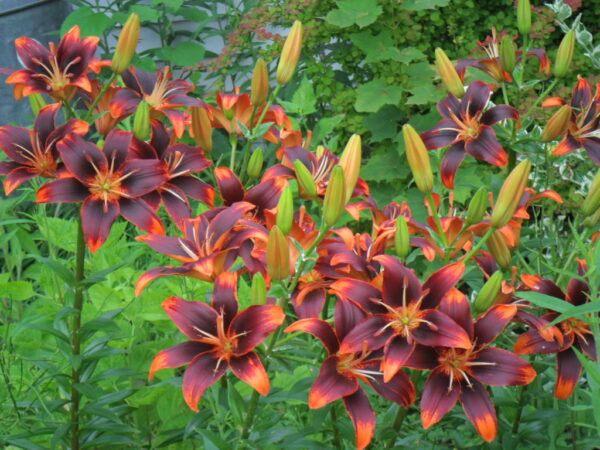
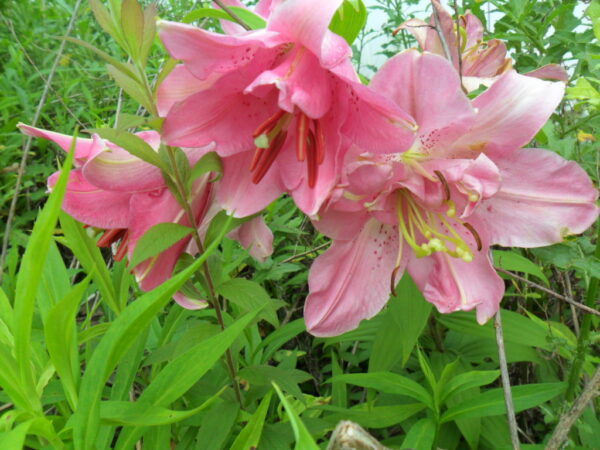
Each is lovely, but they’re just the opening act for the headliners of summer, which are now beginning to emerge as solstice comes and goes. Daylilies are chief among them, and only Collier, a rich butterscotch color with ruffled edges, unfurls before summer officially begins. But now Vintage Bordeaux, a deep winy burgundy; Kiss the Girls, peach with red-rose throats; and the oh-so-aptly-named Chesapeake Crab Legs, brilliant flame orange with streaks of yellow-white, have shown enough confidence to open a tentative bloom or two.
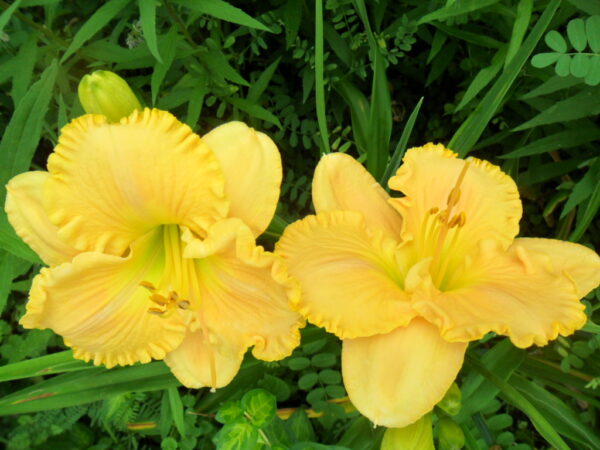
Soon they’ll be joined by the other four dozen daylily varieties on the property, as well as sweeping drifts of bright magenta bee balm, stands of coneflowers in pink, coral and white, mounds of golden rudbeckia, and creamy white Shasta daisies.
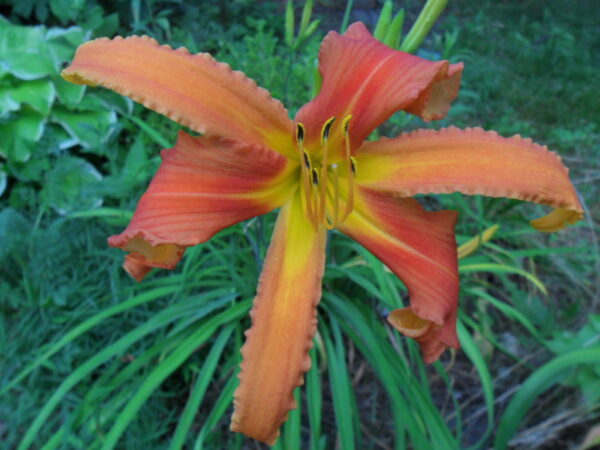
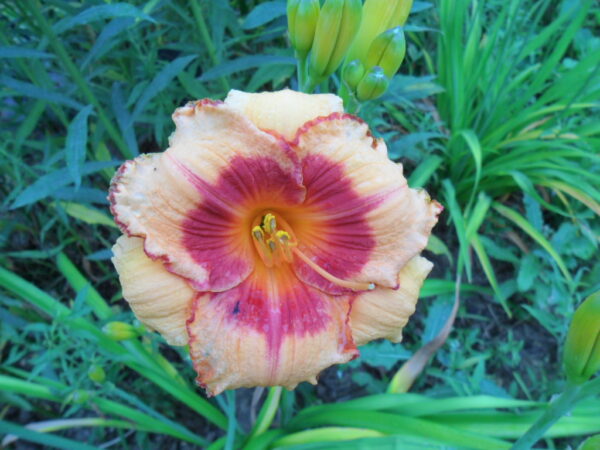
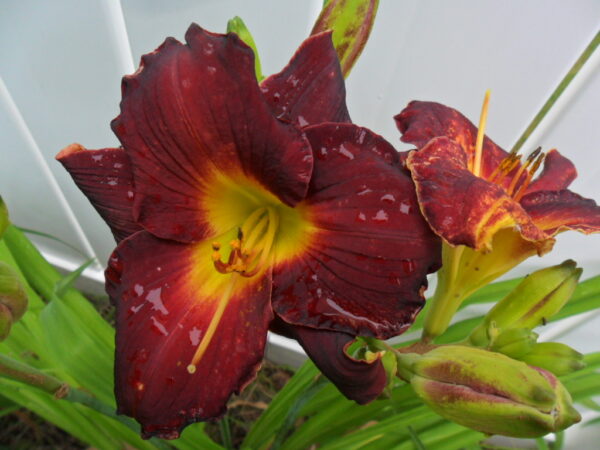
Summer is here – let the garden games begin!
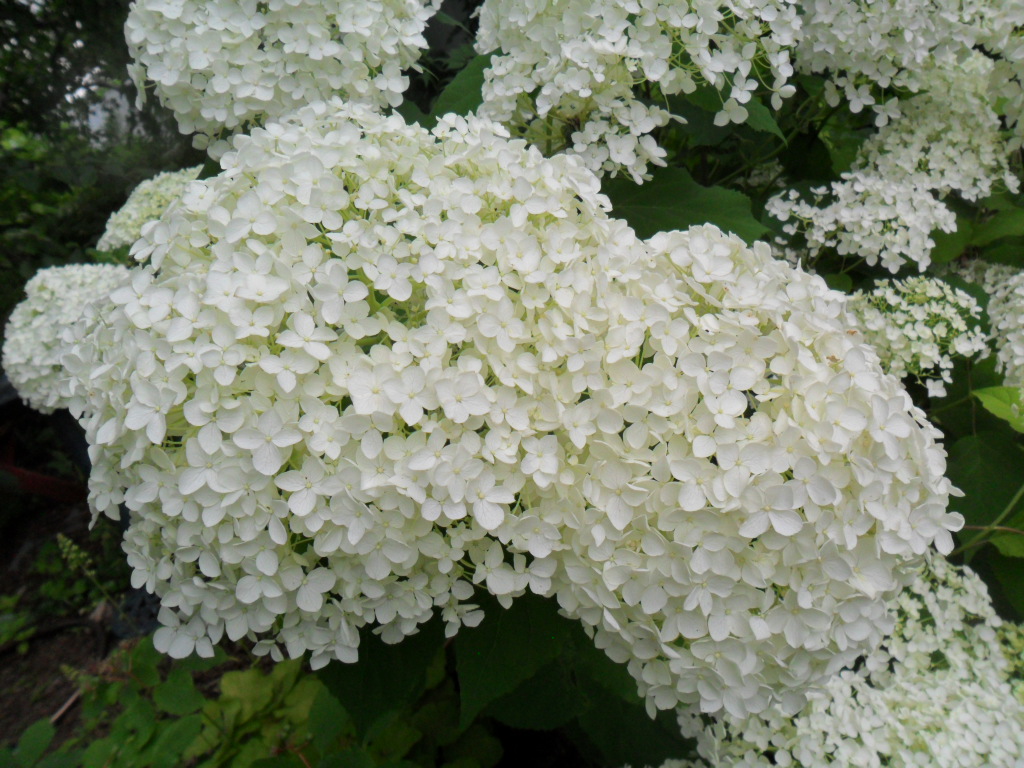

2 comments, add yours.
Rosemary
Alex, Thank you for sharing photos of your beautiful garden. So many pretty
and unusual flowers in bloom all at once! The bright yellow daylily,
purple Iris, and Red Angel hydrangea, & White flowers of Oak leaf hydrangea
pee wee’s & queen of hearts, all spectacular!
Laurien
Beautiful, Alex! I enjoyed these photos so much especially of your lovely hydrangeas. Wonderful the bees are back and I hope the Monarchs show up someday too. I hope your knee is all healed up. Amazing what a wet spring can do! Have a great summer!